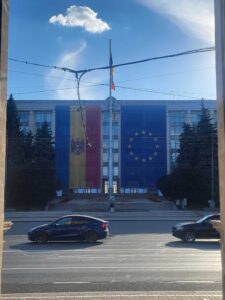Headquarters: Svetog Nauma 7, 11000
Office address: Đorđa Vajferta 13, 11000
Phone:: +381 11 4529 323

Certainly, the most interesting news that came from the summit of the Heads of State or governments of the EU, held recently in Malta, is the renewal of discussion about the core of Europe, or multi-speed Europe. This discussion was prompted by the fact that the United Kingdom launched Brexit (the “famous” Article 50 of the Treaty of Lisbon), which will inevitably open the debate on the future of the EU. It is particularly interesting to understand how a country which is negotiating its membership, like Serbia, must acquiesce in such a situation.
The concept of Europe in multiple (two) speed, variable geometry, or academically known as – differentiated integration differentiated integration, emerged at the end of the Cold War, during preparations for the adoption of the Maastricht Treaty (1993) and the debate on enlargement to Central and Eastern Europe. Essentially, it means that the various candidate members of the EU can be integrated at various levels and paces depending on their internal characteristics, such as their political and economic situations. Today, as before, this integration style defines the reality within which the EU works: even today there is no complete uniformity in accepting the achieved level of integration for all 28 member states. Some are not part of the Schengen system because they have yet to meet additional requirements for it, so a special verification mechanism is predicted to provide regular assessment of the requirements for Romania and Bulgaria (they still do not meet the requirements, according to a report that was submitted in mid-February). Some states do not want to, and some cannot fulfil the Maastricht criteria to become members of the euro zone, and therefore the euro remains the currency in only 19 out of 28 member states. Immediately after the creation of the Defence and Security Policy, during the second half of the nineties, Denmark exercised its right that to be exempt from this policy (the so-called Opt out clause).
On the other hand, membership negotiations themselves are already reflect a kind of differentiated integration. Not to forget: negotiating the terms and manner of acceptance of the entire EU legal order (the acquis) during this process has allowed us to explain that some rules cannot be applied before membership because they are expensive, complex, and would bring more harm than good. This also tells us in which issues regarding European politics we cannot immediately participate because it is simply not possible to do everything in a short period of time. This is the case with the Schengen system since the access to its data exchange information system is not possible until achieving actual membership. Also, by joining the EU, some of Serbia’s borders and its administrative line become external borders of the EU. Their protection must be clearly regulated not only administratively, but also through infrastructure (border crossings, customs procedures, control), and this can be achieved only after membership. It is the same case with the euro – although at this moment Serbia fulfils the convergence criteria (inflation rate, public debt), it is simply not possible to talk about this prior to becoming a member. Also, each new member must undergo a transitional period where current Member States control and regulate the movement of labor from the new Member State to current EU labor markets (through all stages and lasting at least seven years, though the new Member may choose to implement reciprocal restrictions). This is a topic that will be particularly negotiated.
While the membership negotiations are set on a clear basis, and we know what are our opportunities and options are, it will be very interesting to watch how the story of Europe in multiple speeds will affect us. Even if the EU Member States recognise the reality of differentiation that exists today, there will not be significant changes. But if that concept is meant to further enhance integration in some areas, it certainly will not happen overnight, nor in areas where that level has already been significantly achieved. It may be in foreign and security policy, visa policy, asylum and migration as well as fiscal issues regarding the euro. I would say that we are ready for this area and that it should become a subject of our negotiations.
Until then, we are working on preparation for the opening of an important set of chapters related to the economy of Serbia. In the adoption phase from the Government is Chapter 7 – Intellectual property, which has already sparked the interest of the business community in Serbia.
I hope that this will be the same with Chapter 6 – Corporate Law, Chapter 30 – External Relations, as well as with Chapters 4 – Free movement of capital, and Financial services (9). The level of compliance in all of these areas is very good, but further harmonization and, in particular, the implementation of these rules are the real topic. Therefore, we will try to open a discussion about this topic as soon as possible, through the opening of these chapters for negotiations.
This text has previously been published in Serbian economy magazine.